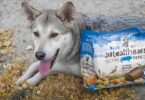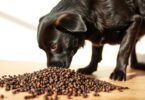Could your kitchen spices be putting your furry friend at risk? While many pet owners enjoy sharing food with their dogs, common seasonings that seem harmless might actually threaten their health. Understanding which flavor enhancers are safe requires careful navigation between culinary creativity and veterinary science.
Not all herbs and spices are created equal for pets. Some household staples like garlic and onion powder pose serious dangers, while others like turmeric or parsley offer nutritional benefits when used properly. The challenge lies in distinguishing between toxic ingredients and those that can safely elevate meals.
Veterinary professionals emphasize moderation and consultation before introducing new elements to a dog’s diet. Even beneficial additives require precise dosing to avoid digestive upset or interactions with medications. This guide combines expert recommendations with practical tips to help owners make informed choices.
Balancing flavor and safety starts with reliable information. Discover which seasonings align with your pet’s nutritional needs and how to incorporate them responsibly. The answers might transform mealtime into both a tasty and health-conscious experience for your four-legged companion.
Understanding the Role of Seasonings in a Dog’s Diet
Herbs and spices can transform bland meals into flavorful experiences for pets, but their use requires thoughtful consideration. When chosen wisely, these additions may enhance nutritional value while catering to a dog’s taste preferences. The key lies in selecting ingredients that align with their biology and health needs.
Benefits of Adding Herbs and Spices
Certain plants offer more than just flavor. For example, rosemary—a safe herb for dogs—contains antioxidants that support cellular health. Other options like ginger aid digestion, while turmeric may reduce joint discomfort. These natural additives can complement veterinary treatments when used under professional guidance.
Moderation remains critical. Even beneficial ingredients become problematic in large quantities. Experts recommend introducing new flavors gradually to monitor reactions like allergies or stomach sensitivity.
Precautions and Veterinarian Guidance
Never exceed the 10% treat rule—seasoned snacks shouldn’t overshadow balanced meals. Stephanie Howe, DVM, advises collaborating with pet nutritionists to design recipes that meet dietary requirements. This ensures treats don’t disrupt essential nutrient ratios.
Always consult a veterinarian before adding herbs to a pet’s food, especially if they take medications. Some spices interact with drugs or worsen existing conditions. Tailoring choices to a dog’s age, weight, and health history creates safer culinary experiments.
What Seasonings Can Dogs Have? A Deep Dive
Pet owners often wonder which kitchen additions can enhance their companion’s meals without compromising safety. Several herbs and spices offer nutritional benefits when measured carefully, turning ordinary kibble into a health-supportive experience.
Identifying Safe Options
Turmeric shines as a golden standard, delivering antioxidant power and anti-inflammatory effects. A pinch (1/8-1/4 tsp per 10 lbs) mixed with food supports joint health. Ginger tackles nausea effectively—1/4 tsp for small breeds, up to 3/4 tsp for larger dogs.
Basil adds vitamins A and K, with 1/8-1 tsp dried leaves per meal. Cinnamon regulates blood sugar in doses from 1/8 tsp (toy breeds) to 1/2 tsp (giant breeds). Always choose Ceylon varieties over cassia for safety.
Serving Size Recommendations
Precision prevents problems. Anise seeds require just 1/16 tsp powder for respiratory support. Fresh cilantro stays safe at 1/16 tsp, while dandelion root needs 1 tsp per 20 lbs. For safe treat options, rosemary shouldn’t exceed 1/2 tsp daily.
Overdoing even beneficial additives risks stomach irritation. Consult a vet before introducing new flavors, especially for dogs with medical conditions. Proper amounts turn potential hazards into health allies.
Common Safe Herbs and Spices for Dogs
Your spice rack might hold hidden treasures that benefit your pet’s health when used wisely. Certain herbs offer more than flavor—they deliver vitamins, combat digestive issues, and even freshen breath. Let’s explore five kitchen staples that double as nutritional allies.
Health Benefits and Preparation Tips
Basil brings antioxidant power to meals while calming anxious pets. Rich in vitamins A and C, it supports immune health. Fresh leaves can be chopped into food or dried for sprinkling.
Chamomile acts as a natural relaxant, easing muscle tension and digestive discomfort. Steep it in warm water for a soothing tea, then mix a teaspoon into meals.
Cilantro tackles bad breath while boosting eye health through vitamin A. Its fresh leaves aid digestion and promote shiny coats. Use small amounts to avoid overpowering sensitive noses.
Dill addresses gas and constipation with gentle digestive support. Sprinkle dried fronds over food or mix seeds into homemade treats for added iron and vitamin C.
Ginger fights inflammation and settles upset stomachs. Grate a pea-sized portion for small breeds or slice thin pieces for larger pets. Always introduce new herbs gradually to monitor reactions.
Fresh varieties typically provide stronger benefits than dried alternatives. For optimal results, consult a veterinarian about portion sizes tailored to your companion’s weight and health needs.
Seasonings That Pose a Risk: What to Avoid
While exploring flavorful options for pets, some kitchen staples hide dangerous threats. Many common additives contain compounds that trigger severe reactions in animals, requiring owners to rethink ingredient choices.
Toxic Spices and Their Effects
Garlic and onion—whether fresh, dried, or powdered—damage red blood cells through sulfoxides. This can lead to life-threatening anemia in toxic dogs. Cocoa powder ranks among the deadliest options due to theobromine, causing vomiting, seizures, and cardiac issues.
Bay leaf and allspice contain eugenols, irritating the digestive system and potentially harming the liver. Spanish thyme’s essential oils disrupt breathing and digestion. Even small amounts of nutmeg induce hallucinations and rapid heart rates through myristicin.
Salt becomes lethal at 1.5 grams per pound, triggering neurological distress. Always check labels for hidden ingredients, especially in pre-made mixes or condiments containing onion or garlic derivatives.
Recognizing Symptoms of Ingestion
Early signs include vomiting and diarrhea, often followed by excessive thirst. Damage to red blood cells may manifest as lethargy or pale gums. Severe cases show tremors, irregular urination, or collapse.
Immediate veterinary care is critical if exposure occurs. Keep emergency contacts accessible and avoid home remedies without professional guidance. Prevention remains the best strategy—store spices securely and educate family members about these risks.
Guidelines for Safely Incorporating Seasonings
Creating flavorful meals for pets requires more than selecting safe ingredients—it demands strategic implementation. Thoughtful introduction of herbs and spices ensures nutritional benefits without overwhelming a dog’s system. Establishing clear protocols helps maintain both excitement and safety at mealtime.
Integrating Seasonings into Meals
Begin with a rice-grain-sized portion of a single herb or spice. Mix it thoroughly into regular food and wait 48 hours before introducing another. This method isolates reactions and identifies problematic ingredients.
Use precise measurements like 1/16 tsp for small breeds or 1/2 tsp for larger dogs. Pair seasonings with familiar foods to ease acceptance. Always confirm dosage ranges with a veterinarian, especially for pets taking medications.
Monitoring Your Dog’s Reaction
Watch for subtle changes in energy levels, stool consistency, or scratching patterns. Gastrointestinal symptoms like diarrhea or vomiting signal immediate discontinuation. Keep a journal noting dates, amounts, and responses to each new addition.
Schedule follow-up vet visits if introducing multiple seasonings over weeks. For sensitive dogs, consider allergy testing beforehand. Patience and consistency turn cautious experimentation into long-term dietary success.
Homemade Dog Treat Recipes Using Safe Herbs and Spices
Transform everyday snacks into nutrient-packed delights by blending pet-friendly herbs with simple ingredients. These recipes prioritize flavor and wellness, turning kitchen experiments into tail-wagging successes.
Creative Recipe Ideas
Applesauce Dog Treats combine cinnamon’s blood sugar support with low-sodium bone broth for hydration. Mix pumpkin puree, oats, and ground ginger to create digestive-friendly biscuits. Turmeric’s anti-inflammatory properties shine in golden treats using coconut oil and oat flour.
For fresh herb options, try adding finely chopped cilantro to chicken-based bites. Its antioxidants promote eye health while neutralizing bad breath. Always use pure pumpkin—never pie filling—to avoid harmful additives.
Ensuring Nutritional Balance
Vet-approved recipes maintain proper protein-to-carb ratios. Limit treats to 10% of daily calories to prevent weight gain. Pair ginger’s nausea relief with lean proteins like turkey or salmon for balanced meals.
Consult a veterinary nutritionist when designing homemade diets. They’ll verify ingredient safety and adjust portions based on breed size or health conditions. Proper planning turns flavorful creations into lasting wellness tools.
FAQ
Which spices damage red blood cells in dogs?
Garlic, onions, and chives contain compounds that destroy red blood cells, leading to anemia. Even small doses of these Allium-family ingredients can cause weakness, vomiting, or breathing difficulties. Avoid sharing foods seasoned with these spices
Can cinnamon cause stomach upset in dogs?
While non-toxic, large amounts of cinnamon may irritate a dog’s digestive system, causing nausea or diarrhea. Stick to a light sprinkle (¼ teaspoon max for medium-sized dogs) in treats. Opt for Ceylon cinnamon over cassia varieties, which contain higher coumarin levels.
Are any herbs safe for dogs to consume?
Yes, parsley, basil, and ginger are generally safe for dogs in small amounts. These herbs offer benefits like freshening breath or aiding digestion. Always introduce new ingredients gradually and consult your veterinarian before adding them to meals.










Leave a Comment